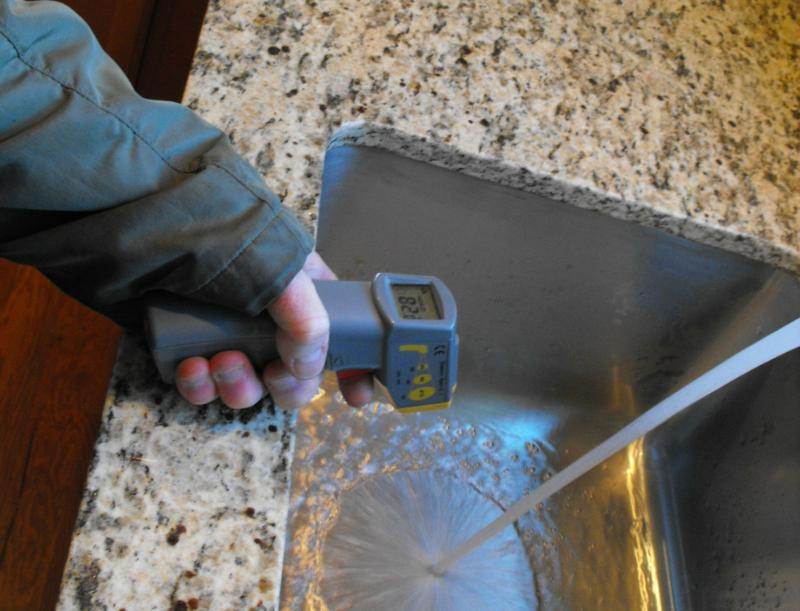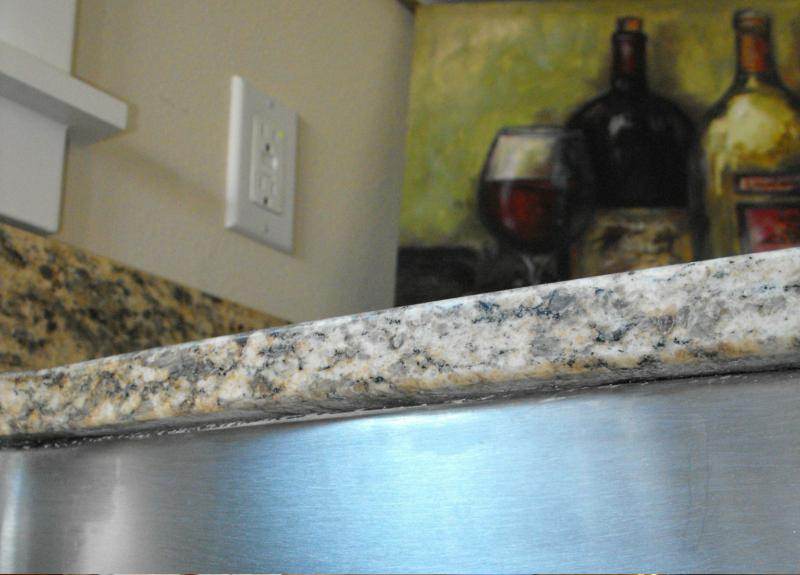Why don’t kitchen sinks have overflow holes?
Sinks with overflow holes are not allowed in food preparation areas due to the possibility of providing a place for bacteria and mold to grow around the overflow—-stuff you might not want as a “food seasoning.”

In general, the area around sinks should be kept very well sealed and caulked in order for them to be more easily maintained and kept sanitary. Wheather the sinks are self rimming sinks, or under-mount type sinks, the connection between the two should be properly caulked. Of course the molded plastic type sinks where the sink actually becomes a seamless part of the counter top is by far the easiest type to maintain.
Under-mount sinks are very fashionable these days, for a nice “clean” look, yet they can actually be less sanitary than a self-rimming type unless one is very vigilant in cleaning the underside of the counter top where the sink is caulked to the bottom side. Add to this—-in the case of granite—that the underside of the overhangs is usually “unfinished” and creates an ideal place for mold and bacteria to grow (kind of like the underside of the toilet tank where there is no enamel coating).
In the following picture you can see where the connection of the sink to the counter top has not been caulked, creating a gap where mold and bacteria WILL grow.

Except for cheese and miso soup, it is probably a good idea to keep most bacterias and fungal growths out of the kitchen all together.
***
Charles Buell, Real Estate Inspections in Seattle
If you enjoyed this post, and would like to get notices of new posts to my blog, please subscribe via email in the little box to the right. I promise NO spamming of your email